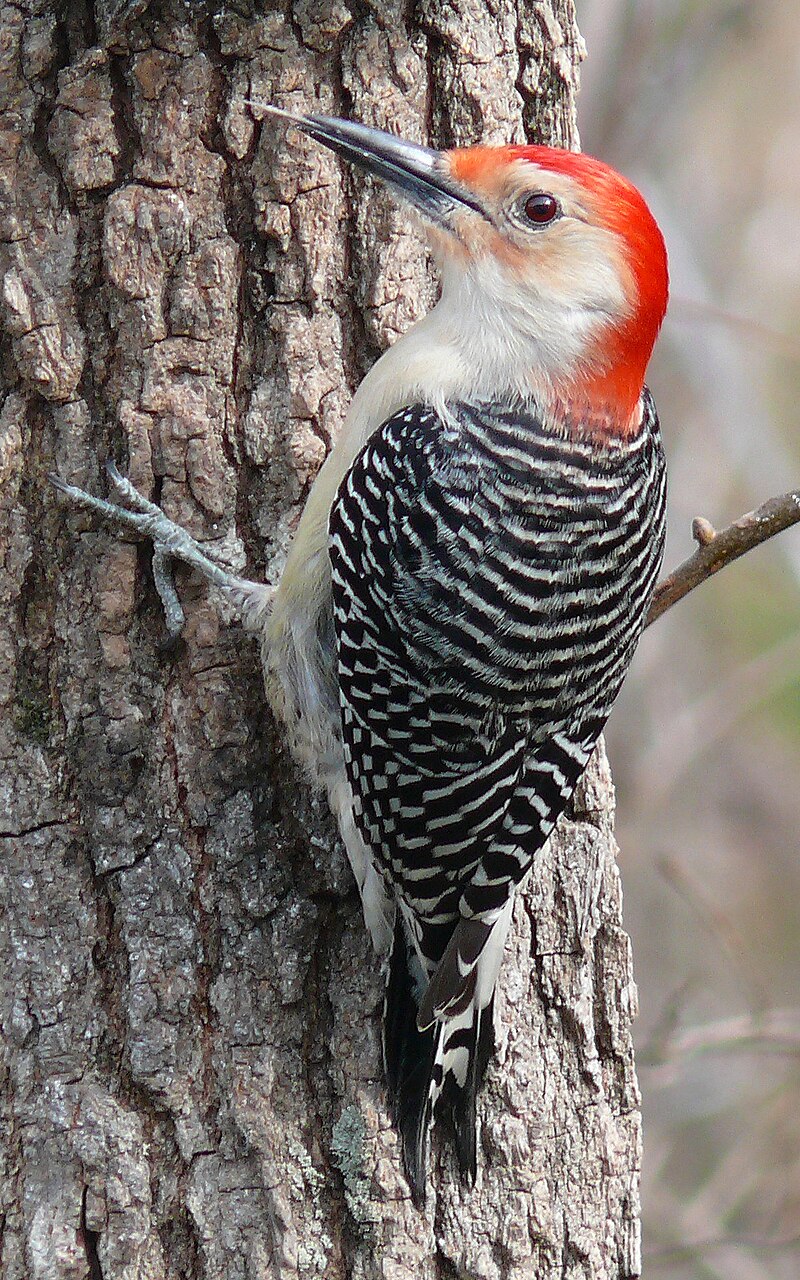Woodpeckers: A Comprehensive Overview to Comprehending These Unique Birds
Woodpeckers, with their unique behaviors and physical features, have actually long astounded the curiosity of ornithologists and nature enthusiasts alike. From their balanced drumming resembling through the woods to their exceptional adjustments for scaling tree trunks with simplicity, these birds provide a fascinating research in bird biology. Nonetheless, what truly establishes woodpeckers apart is not just their striking appearance yet also their important duty in preserving the fragile balance of environments. As we explore the complex anatomy, varied types, and eco-friendly importance of woodpeckers, a much deeper gratitude for these special birds and the mysteries they hold unfolds.

Woodpeckers' Drumming Habits
Woodpeckers exhibit a balanced and specific drumming habits that offers different important functions in their every day lives. This behavior is largely related to communication, territory defense, and foraging. The unique drumming noise is produced by the quick pecking of their beaks against hard surface areas such as tree trunks, branches, and even steel items.
Communication is a vital aspect of woodpecker actions, and drumming plays a considerable duty in this procedure. Woodpeckers use drumming to develop their existence, attract mates, and keep contact with their partners and spawn. The frequency, intensity, and duration of drumming sequences communicate particular messages to various other woodpeckers in the location.
In enhancement to communication, woodpeckers make use of drumming actions for area protection. Woodpeckers in Florida. The loud and recurring drumming acts as a warning to potential trespassers, signaling that the location is currently declared. By establishing their region with drumming, woodpeckers decrease the likelihood of disputes over beneficial sources such as food and nesting sites
In addition, woodpeckers likewise employ drumming as a foraging method. The balanced pecking assists them find pests concealing underneath the bark of trees by creating resonances that interrupt the prey's camouflage. This habits showcases the adaptability and ingenuity of woodpeckers in using their drumming skills for several necessary purposes.
One-of-a-kind Adjustments for Tree Climbing
Having grasped the art of drumming to connect, safeguard territory, and forage, woodpeckers have developed special adaptations that promote their remarkable climbing abilities in their arboreal environments. One key adjustment is their customized feet. Woodpeckers have zygodactyl feet, with 2 toes aiming ahead and 2 toes aiming backward. This plan supplies a solid grip on the vertical surfaces of trees, enabling them to stick effortlessly while foraging for insects or drumming. In addition, woodpeckers have tight tail feathers that work as a prop to support their bodies as they climb up. These tail feathers provide security and equilibrium, making it possible for woodpeckers to maneuver up tree trunks with accuracy and dexterity.
Additionally, woodpeckers have powerful neck muscular tissues and a distinct skull structure that aid in their climbing capacities. Their solid neck muscle mass allow them to quickly peck at tree bark without experiencing whiplash, while their thick head and tiny mind work as shock absorbers, safeguarding them from the impact of repeated drumming. These adjustments collectively enable woodpeckers to browse the upright world of trees with effectiveness and try this web-site grace.
:max_bytes(150000):strip_icc()/GettyImages-1094628502-a831e9c1be004c05b057f488ff819127.jpg)
Duty of Woodpeckers in Environments
By foraging for pests under the bark of trees, woodpeckers help control bug populations, stopping break outs that might damage the overall wellness of the forest. In addition, woodpeckers create dental caries in trees that offer as important nesting websites for a range of various other bird varieties, advertising biodiversity within the ecosystem.
Additionally, the drumming and articulations of woodpeckers play a vital role in communication and area establishment. These audios not just serve to draw in friends yet also assist specify limits between various woodpecker areas, decreasing problems and promoting a harmonious coexistence within the woodland community. Generally, the existence of woodpeckers in woodland ecological communities highlights their relevance as keystone species, affecting the characteristics and functioning of these habitats in complex methods.
Makeup: Specialized Beaks and Feet
In the elaborate internet of forest environments, the specialized beaks and feet of woodpeckers are vital adjustments that allow them to fulfill their essential environmental functions. Woodpeckers have distinct physiological attributes that are especially created to help them in useful site their foraging and nesting actions.
One of the most distinguishing characteristic of woodpeckers is their strong, chisel-shaped beaks. These beaks are completely adjusted for boring right into timber to discover bugs, larvae, and sap surprise under the bark of trees. The strong muscle mass and sturdy structure of their beaks enable woodpeckers to peck at a price of up to 20 times per second without creating damage to their skulls.
In addition, woodpeckers have specialized feet that aid in their acrobatic climbing abilities. Their feet have 2 toes directing forward and two toes pointing in reverse, offering a strong hold on upright surfaces (Woodpeckers in Florida). This one-of-a-kind foot setup, along with stiff tail feathers that function as a supportive prop, allows woodpeckers to hold on to tree trunks and branches effortlessly while they look for food or excavate nesting tooth cavities
Woodpecker Types Variety
Woodpeckers are a diverse group of birds discovered throughout various ecosystems worldwide, with over 200 well-known varieties showing adaptations to different environments. Woodpeckers have actually developed to populate a range of atmospheres, from woodlands and forests to grasslands and deserts, each presenting unique challenges that have actually affected the advancement of unique woodpecker species.
These adaptations make it possible for woodpeckers to forage successfully in their respective environments, minimizing competition amongst species and promoting this hyperlink niche distinction. Furthermore, geographical isolation and historic factors have played a function in forming the circulation and variety of woodpecker species, leading to the wide selection of specialized adjustments seen in these fascinating birds.

Final Thought
In verdict, woodpeckers are remarkable birds that display special drumming habits, specialized adjustments for tree climbing, and play essential functions in ecosystems. With a varied array of woodpecker varieties discovered worldwide, these birds are vital for keeping the health and balance of forests and forests.